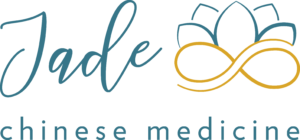From the early times of western philosophy and science, the idea of the body as machine – as a series of parts pumping together like some giant industrial factory – has held dominant place in our consciousness. Western conceptual thought comes from a fundamentally cartesian, separatist model. This reflects across our philosophical, economic, and scientific structures. And its caused a number of growing and acknowledged problems throughout. Obviously this includes our medical framework as well. We have held ourselves – our minds – as separate from our bodies, treating them with either disregard, sometimes bordering on abuse, when they were functional, and then with irritation when a part ‘broke down’ and needed to be fixed. We have been trained and encouraged to think, and to look for a singular, linear progression, rather than than a series of cumulative events creating a broader picture of health.
Or lack of health, as the case may be.
The body as object: singular, static and external has held dominant thought in our consciousness, something to be controlled, tamed and repressed when necessary: which rather closely matches our current tendency to suppress symptoms as inconvenient and time consuming, instead of simply part of a cycle, a process of generation and degeneration: as lessons to ask for how we can avoid the issue recurring,
There has also historically been a tradition in western medicine of valuing signs: the things which are visible, objective, and quantative, over symptoms: the subjective, internal experience which only the person experiencing it is able to value and qualify. This works for things like external trauma and emergency medicine. Or one specific problem: antibiotics for a bug. (lets leave the frightening and significant issue of antibiotic resistance aside for now).
However: the problems this perception of ‘real’ and measurable vs subjective experience has created in regard to the so called ‘invisible illnesses’, which by definition don’t fulfil these objective criteria, are obvious. By invisible illnesses, I mean anything you cant see in an x-ray or a lab test. In current times these conditions are generally of the chronic pain, ill health or mental health varieties. For example, Myalgic Encephalomyelitis, (often called Chronic Fatigue Syndrome in lay terms), Fibromyalgia, Migraines, Autoimmune conditions, and anything of the mood imbalances/mental health variety. Thats a lot of very real conditions which cant be seen on a screen! Until recently, it also meant hormone issues, and allergies – of any description. (Except the anaphylaxis kind: I guess they were pretty obvious).
Western medicine is like a rifle: point and shoot. Here is the target. Bang!


Eastern philosophy and science, by contrast, comes from a much more holistic and broader perspective. From the earliest times, the Chinese looked at themselves as part of a whole. All of us are part of our environment, not separate from it, and anything that affects your world must, by definition, also affect you. Nothing exists in isolation. Its a comprehensive and holistic framework, with mechanisms and actions across physical, emotional, and energetic aspects together. Eastern conceptual thought is very much about the interaction and the relationship between things. These differences also reflect in our medical practices. Eastern medicine, instead of the rifle model of medicine, looks more like this.
You’ll notice: it did still hit the target. But then we also do other things at the same time: we improve sleep, we regulate hormonal function, we treat neurological responses, we assist with inflammation and we reduce pain…. the list goes on. These added benefits are consistent with Acupuncture treatment and one of the many things that clients who come to Acupuncture love. Instead of one benefit per treatment, you get many benefits!! I think we can safely call that a bargain 🙂
In Eastern Medical practice, signs and symptoms are given equal weighting, as are physical and emotional symptoms. We look at health – body and mind – as a process, constantly shifting and evolving. And we see it as unique, based on the individual and on the environment they interact with. An Oriental Medical practitioner is, literally, the original mindbody practitioner, performing neuroscience with needles. Phenomena now proven and validated by western science… much more so than many of the practices you probably consider to be ‘scientifically’ based. Ah…. irony. I love it. Really.
What we do is easily summed up in this:

Now don’t get me wrong: Im a huge fan of western science, almost as much as eastern science, and there are absolutely times when you should go to your GP, or the hospital, and not your Acupuncturist. And I, like any Registered, trained Acupuncturist, will be insisting firmly with you that you go, when appropriate. But western medicine, with all its benefits, is like any other form of medicine: it has its limits.
There is more to health than the absence of disease, and this is something that is absent from the standard western medical model: a system and acknowledgement of what health actually is.
Which means that if what you have is a systemic problem…. then you need a medical model which looks at your health as a system. This is not a difficult concept, this is just common sense. You choose the right tool for the job.
As Confucious would say – don’t use a cannon to kill a mosquito.
Imagen de kjpargeter en Freepik



